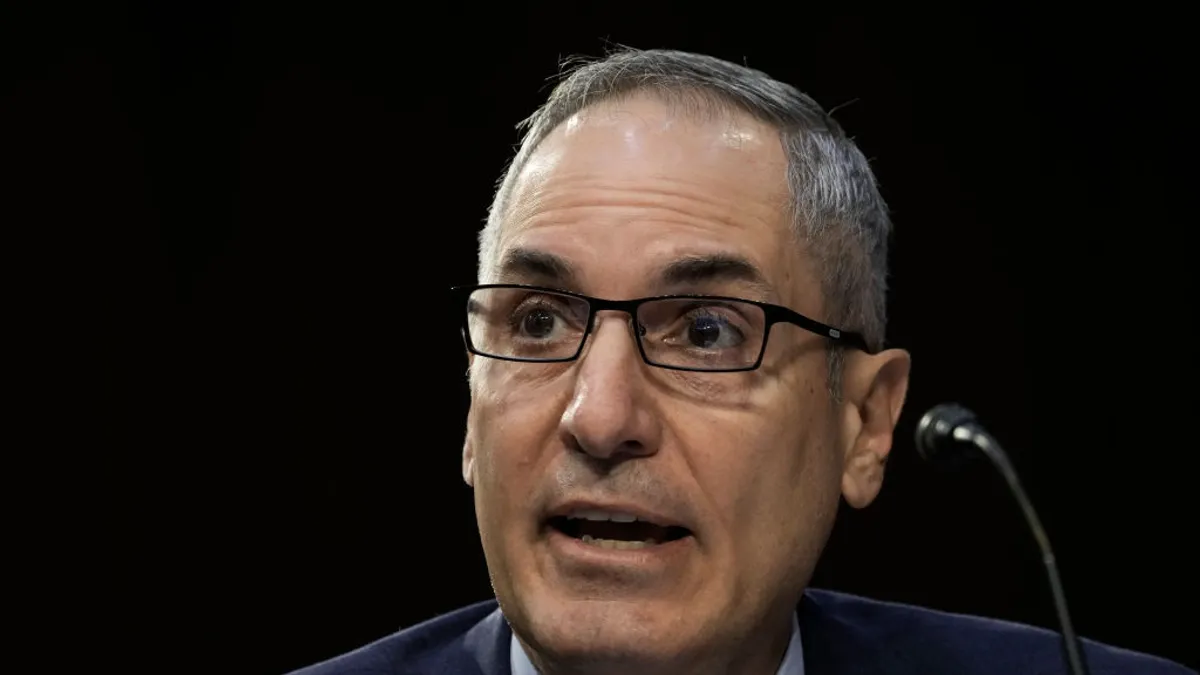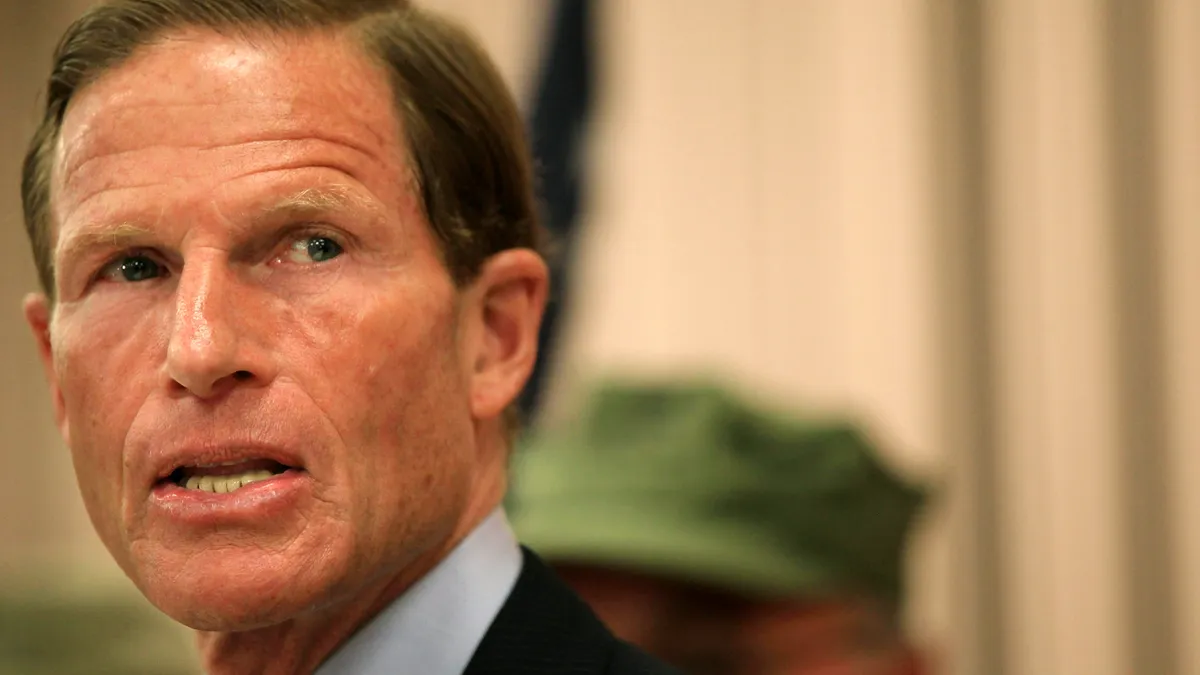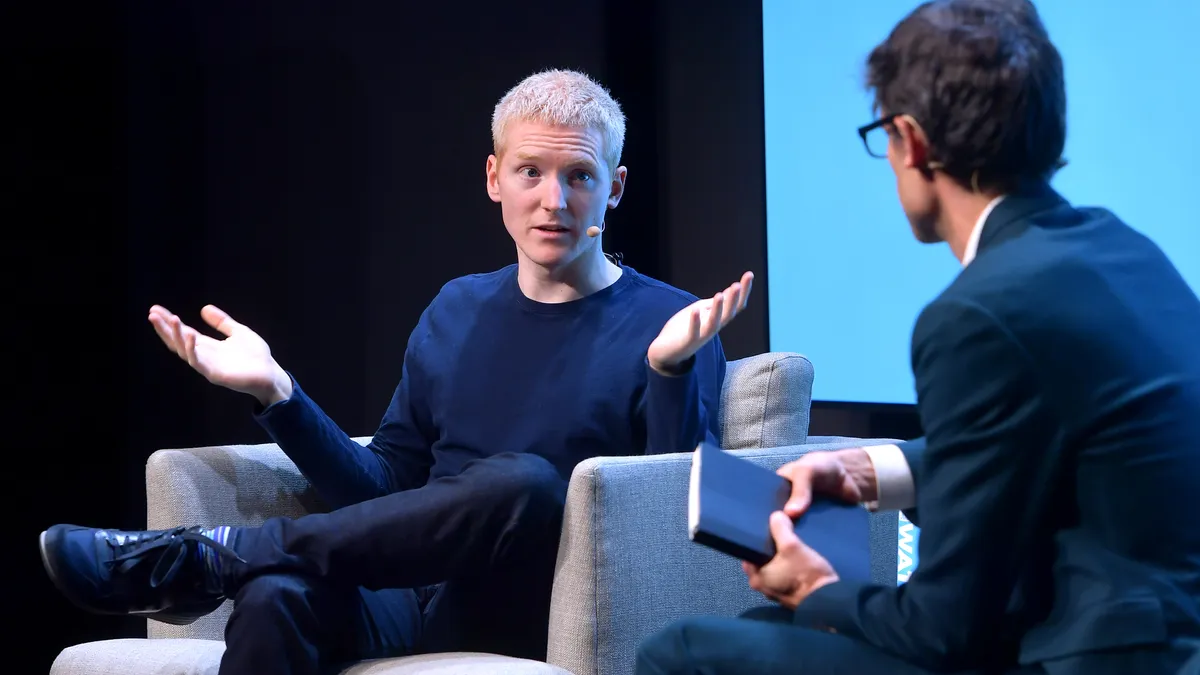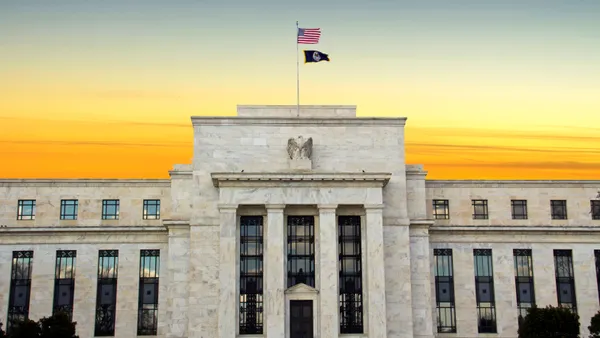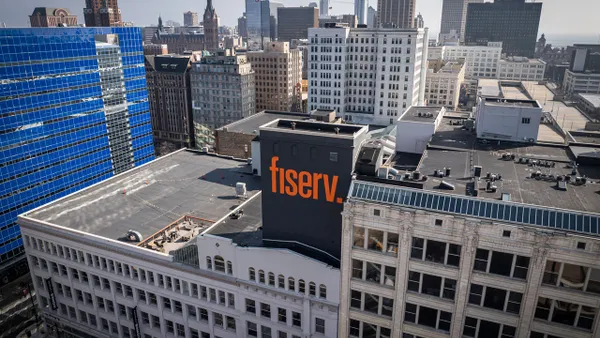U.S. Bank's plan to split its payments business in two isn't a change in strategy, but rather reflects how the financial institution expects to pursue future opportunities, CEO Andy Cecere said last week.
The move, telegraphed in late October, will separate the Minneapolis-based bank’s merchant and institutional payments segment from its consumer and small-business segment. That followed the August announcement that Shailesh Kotwal, the bank’s vice chair of payment services, would retire in the first half of 2025.
Payment services generate about 25% of the bank’s revenue, and putting the segments under two separate leaders points to the payments business’ significance at the bank, now and moving forward, Cecere noted last Wednesday during an appearance at an annual Goldman Sachs financial services conference.
The merchant and institutional side of payments will include treasury management, corporate payments and merchant acquiring, and it will be led by Mark Runkel, now the bank’s chief transformation officer.
“That’s an opportunity to focus on that and really create a continued glide path to growth,” Cecere said.
Runkel will take his new post in January and report to the bank’s president, Gunjan Kedia.
The consumer and small-business side of payments will include debit and credit card issuing and the bank’s partnership with payments firm Elan. U.S. Bank is likely going to hire externally to lead that unit, Cecere said. The bank expects to fill the position, which will also report to Kedia, in the first half of next year.
“We’re very encouraged by the level of talent that we have out there for that,” Cecere said.
On another front, Cecere also said he’s taking a positive view of the incoming Trump administration’s Department of Government Efficiency, as the bank has a sizable business relationship with the federal government.
U.S. Bank has ties to a number of agencies within the U.S. government, as it’s one of two contractor banks (along with Citi) providing payment services via the General Services Administration’s SmartPay program. Asked Wednesday if that relationship could be negatively affected by DOGE efforts to slash government spending, Cecere indicated he’s optimistic it won’t.
Cecere said he’s viewing DOGE’s pursuit as an opportunity, “to the extent that we can increase … efficiencies around payment flows and payments via electronic methods.”
The bank can “contribute to [DOGE’s] objective, and help us as well,” he added.
DOGE, a nongovernmental task force led by billionaire Elon Musk and one-time presidential hopeful Vivek Ramaswamy, will seek to “dismantle” government bureaucracy and slash “wasteful” spending, according to President-elect Donald Trump. The effort aims to cut federal spending by up to $2 trillion.
Trump is set to return to the White House in January for a second term. DOGE, a Trump-led initiative aimed at reducing federal spending, could recommend cutting U.S. government programs and employees, as well as the removing certain regulations.
U.S. Bank’s annual report, issued in February, said the lender is the largest provider of commercial card payments to the U.S. government.
U.S. Bank and Citi were awarded GSA SmartPay contracts in August 2017, to continue providing payment services and data tools to about 560 government agencies. The commercial payment program facilitates payment services for U.S. government, tribes and tribal organizations, including purchasing, travel, fleet and integrated payments capabilities, according to its website.
Counting contract extension options, those contracts can run through November 2031, with the banks facilitating some $700 billion in credit card and related payment transactions. A U.S. Bank spokesperson declined to comment on the terms of the SmartPay contract.



